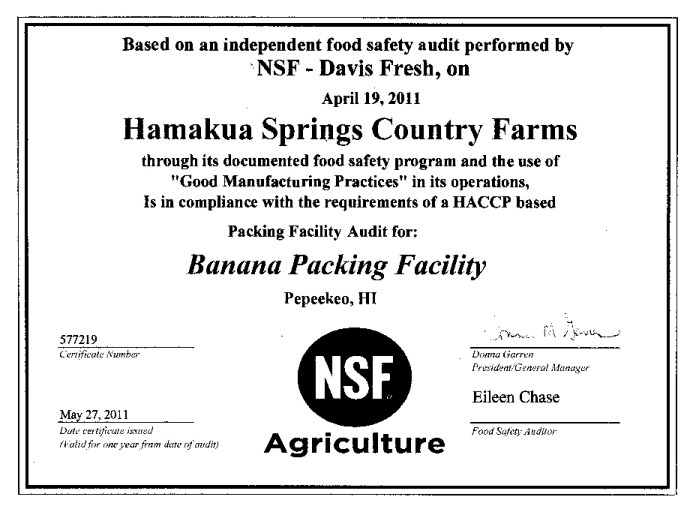Someone who commented on one of my blog posts mentioned that bananas grow all over his home island of Madeira. He said that their bananas have some marks on them, but the tourists like them.
It reminds me of the time an engineer from Chiquita Banana in Costa Rica called me when he stopped over on O‘ahu on his way to the Philippines. He knew we were one of two banana farms in the world about to be certified “ECO-OK” by the Rainforest Alliance.
Although we were actually the first to be certified, we had to wait until a Central American farm could officially be certified at the same time with us. We heard that it would not have been good for a farm outside of Central America to be declared ECO-OK first.
We were at the Ritz Carlton with Kate Heaton from the New York office of the Rainforest Alliance, and she was in contact with the Costa Rica office, waiting to hear if we could go ahead and make the announcement. Exciting times. The large banana plantations in Central America were resisting having to become certified, and here we were — a banana farm in Hawai‘i — causing them so much grief.
Anyway, the Chiquita engineer told me he was going to the Philippines to help set up a high-elevation banana plantation. The objective was to get the bananas to mature more slowly, so they would taste better — just like the ones in Hawai‘i and Taiwan.
So that is the story of why Hawai‘i bananas taste better. They are further north of the equator than Central and South American bananas, and because of that they take longer to mature. This allows more complex tastes to develop.

